Uncover Chinon's vibrant flavors and culinary gems with our expert guides. Plan an unforgettable trip now!
Read more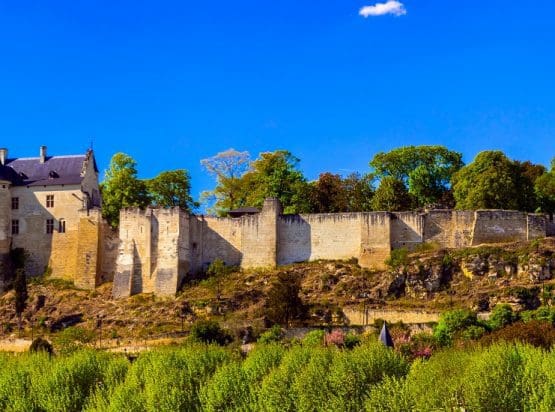
EXPLORE ALL OUR LOIRE VALLEY WINE REGIONS GUIDE
Last updated: June 13, 2024
How best to describe the wines of Pouilly-Fumé? A decent alternative to Sancerre, a better value option “just over the river”; a smokier interpretation of Sauvignon Blanc? None of these do Pouilly-Fumé justice.
However, we can say that white wines made in this underrated region have a unique identity. Indeed, they are often more rounded and full-flavored than their counterparts from Sancerre, with a touch less acidity and more body. The grape variety, of course, is the same. Yet there are clear stylistic differences according to location, ranging from mineral-infused to broad and powerful whites of immense weight. Such is the magic of terroir.
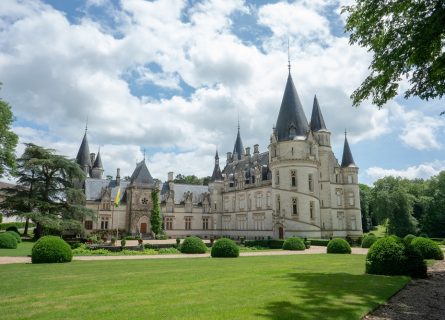
Pouilly-Fumé, developed by the Romans after their conquest of Gaul in the last century BC, has long been an important vineyard in the Loire Valley, and centuries of conflict between the Celtic Gauls and the forces of Rome ended in 52 BC, following Caesar’s defeat of the Celtic Arverni tribe near present-day Clermont-Ferrand.
The Romans subsequently built a lavish estate on the site of modern-day Pouilly-Fumé; the Loire River was one of Roman Gaul’s most important transport arteries and a major center of viticulture by the 5th century AD. Yet Rome’s hegemony collapsed in AD 476 as the Goths, Vandals, and Franks staged a revolution in Western Europe.
Medieval Times in the Loire Valley
In the aftermath, the Frankish kings ruled most of France for five hundred years. Charlemagne, their most famous ruler, became the Holy Roman Emperor in 800, and his territories included the lands in northern Italy, which once belonged to the Lombards. However, during the 9th century, Scandinavian Vikings raised France’s western coast, settling in the lower Seine Valley and forming the duchy of Normandy a century later.
Medieval builders constructed many splendid chateaux along the Loire’s banks as fortresses to fend off marauding Vikings in the Middle Ages. By the 11th century, massive walls topped with battlements, fortified keeps, and moats were ubiquitous in the Garden of France.
Church’s Role in Re-establishing Viticulture
Meanwhile, the Catholic Church re-established viticulture in Pouilly-Fumé during this period, overseen and managed by Benedictine monks from their monasteries in the Loire. At the same time, Italian artists decorated royal castles in Blois and Chambord, while Renaissance ideas of secularism and scientific discovery assumed a new importance in Europe.
Unfortunately, the Loire remained a key battleground during the Hundred Years War between France and England. Many bloody battles took place in its vicinity, a state of affairs that only ended after Charles VII regained his crown (with the help of Joan of Arc!) and pushed the English out of France in the 1400s.
French Revolution Impact Pouilly-Fumé Winemaking
The Loire became the center of French court life for many centuries – the wines of Pouilly-Fumé were the toast of the aristocracy, both at home and abroad. However, after the French Revolution of 1792, life was upended in winemaking communes like Pouilly-Fumé.
Vineyards formerly owned by the upper classes (and religious orders) were seized and distributed among the French proletariat – men and women who had worked the land for a pittance during the ancien régime.
Phylloxera Epidemic in the Loire
The heyday of wine production in the Loire was the mid-19th century: the area under the vine expanded significantly, and exports grew off the back of rising prosperity across Europe. Yet the advent of phylloxera destroyed many livelihoods in the late 1800s as this poisonous louse swept through vineyards in the Loire. The only solution was to regraft European vines onto American rootstock, which began in earnest in the early 20th century.
Before the phylloxera epidemic, Gamay and Pinot Noir were the mainstays of life in the region. Yet Sauvignon Blanc proved far more amenable to regrafting, so it became the key variety of the zone. Today, Pouilly-Fumé remains one of France’s premier sources of aromatic Sauvignon Blanc, exporting a generous volume to markets like the US, UK, and Hong Kong.
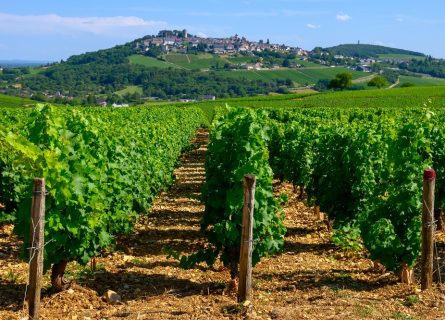
The beautiful vineyards of Pouilly-Fumé are a jewel in the majestic Loire Valley. You can find them on the right bank of the river, directly opposite the gentle hills of Sancerre. If you cross the river, you’ll end up in the pretty town of Pouilly-sur-Loire – the production zone extends north and east from that point with approximately 1250 hectares under vine.
Sauvignon Blanc: The Predominant Grape
Like its neighbor, Sauvignon Blanc is the mainstay of production in the appellation, supported by a tiny amount (30 hectares) of Chasselas used to make a very pleasant, if slightly anodyne, dry white. Yet the noble Sauvignon Blanc pays the piper in the region, known locally as Blanc Fumé. It is a very aromatic, structured, and racy expression of this ubiquitous grape, renowned for its bouquet of gunflint, blackcurrant leaf, and wood smoke.
When benchmarked against the deluge of less-than-stellar examples made in the New World, its crystalline brilliance and understated elegance become all the more thrilling.
Unique Soil Composition and Climate Influences
How is this achieved? Residents of Pouilly-Fumé will insist, naturellement, that the secret lies in the region’s unique soils and near-continental climate: very warm summers and long, cold winters. Indeed, we can assume that the high proportion of clay flint (silex) in the local soils must be at least partly responsible for Pouilly-Fumé’s signature aroma. That said, one will also find white limestone soils in the appellation, with outcrops of marlstone and deep, cold clay terroirs as well. Generally, the most linear and refined expressions tend to emanate from subzones rich in silex; a high percentage of clay results in rather sturdy and robust white wines.
Altitudinal Variations and Premier Vineyard Sites
In addition, many Pouilly climats (vineyard sites) are planted at lower altitudes than their equivalents in Sancerre, as the terrain is less undulating. Thus, they tend to ripen a little earlier in the season, located between 200-300 meters above sea level. The prettiest vineyards flank the hilltop town of Pouilly-sur-Loire itself. However, most growers regard the soils located in the northern section of the zone as being of ‘Grand Cru’ potential. This is due to the higher proportion of the aforementioned silex, which confers the potential for age-worthy, pungent wines of real finesse.
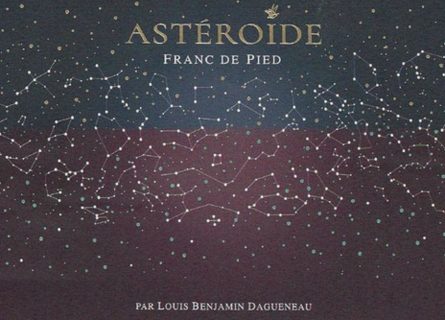
Forty years ago, most cellars in Pouilly-Fumé had equipment that seemed to be from the Dark Ages. Or, at the very least, winemaking methods and tools that were very primitive. The regrettable truth is that many owners could not afford the investment required to raise standards; families often survived by the skin of their teeth until pioneers like Didier Dagueneau made Pouilly-Fumé fashionable again with his combination of slick marketing, charisma, and uber-expensive, publicity-seeking Asteroide label.
But, in the 1980s, a typical vintage might involve machine-harvested fruit, pressed upon arrival, with rough juice settling and minimal fermentation temperature control as standard. Rarely would you encounter any oak barrels (certainly not new) in the historic wineries of the region, as new barrique is a costly overhead. The resulting wines were rustic and disagreeable, with a discernible lack of fruit and finesse.
Modernization and Innovation
However, at the end of the 20th century, rising investment saw a number of wineries age their top cuvées in wood, producing a more textured and complex expression of the grape. At the same time, vinification in stainless steel yielded a more fruit-driven and vibrant style of Sauvignon Blanc, able to compete with the best of Sancerre and, indeed, Marlborough. The vast majority of producers in the zone are of modest size, excluding the cooperatives.
Evolution into a Premier Source of Sauvignon Blanc
Pouilly-Fumé is not a region of corporate brands and soulless wineries. It is, however, an increasingly reliable source of excellent Sauvignon Blanc—whites of great fragrance, suppleness, and intensity. Conventional wisdom tells us that most Sauvignon reaches its appetizing, flirtatious peak within a few years after the harvest—often less than two. Yet Pouilly-Fumé’s ambitious growers, not least the Dagueneau family, have proven that the best examples will age gracefully for many years, gaining depth and complexity.
Pouilly-Fumé has been transformed over the past 20 years by producers who have energized the region with new expertise, massive investment, and headline-grabbing labels to complement the exceptional soils and benign climate. This remarkable appellation existed in Sancerre’s shadow for too long, never quite realizing its full potential as a purveyor of elegant, intensely complex Sauvignon Blanc.
While New World producers have fully ‘colonized’ that grape, which is no news to anybody, the best whites of Pouilly-Fumé stand out for their expression of terroir rather than simple varietal flavors.
Contrasting with Warm Climate Sauvignon Blancs
It’s true – you can taste it in the wines. A great deal of warm climate Sauvignon, it must be said, assaults the palate with an upfront attack of grassy, gooseberry, and guava-rich fruit; leading critic Tim Atkin MW described it as:
“leaping headfirst into a gooseberry bush.”
There is clearly a time and a place for such boisterous, expressive whites from New Zealand, South Africa, and, increasingly, Chile.
The Unique Appeal
Yet, we must also consider the wine lover who craves something more subtle and less obvious. The advantages of ancient soils, a continental climate, and a renewed emphasis on low yields can be tasted in the mineral-infused, understated elegance of a great Pouilly-Fumé. Of course, there are variances in quality, and not every bottle of white from this appellation will knock your socks off. But there are enough brilliant wines being made here to convince spoilt-for-choice consumers to give New World Sauvignon Blanc a night off.
Chasselas is a white wine grape varietal grown mainly in Switzerland but has a strong historical link with France's Loire and Savoire regions.
Find out moreThe sauvignon blanc grape varietal, originally from the Bordeaux region of France, is now one of the world's most loved white varieties.
Find out more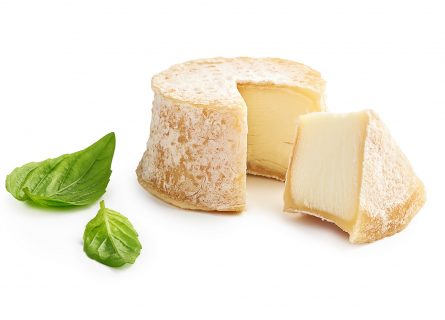
There are some delightful bistros and small restaurants in Pouilly-sur-Loire – a surprising amount considering the size of the place! Most are unpretentious, characterful, and packed at lunchtime, serving up lashings of mussels, duck breast, river fish, and the delectable Crottin de Chavignol. The latter is considered de rigueur when quaffing razor-sharp, aromatic Pouilly-Fumé.
A Gastronomy Guide to the Cuisine of the Loire: Read more
If you would like us to customize an exclusive luxury tour, contact us and let us know your travel plans. We offer luxury food and wine tours for private groups of a minimum two guests. In addition, all of our private, chauffeured tours are available year-round upon request.

